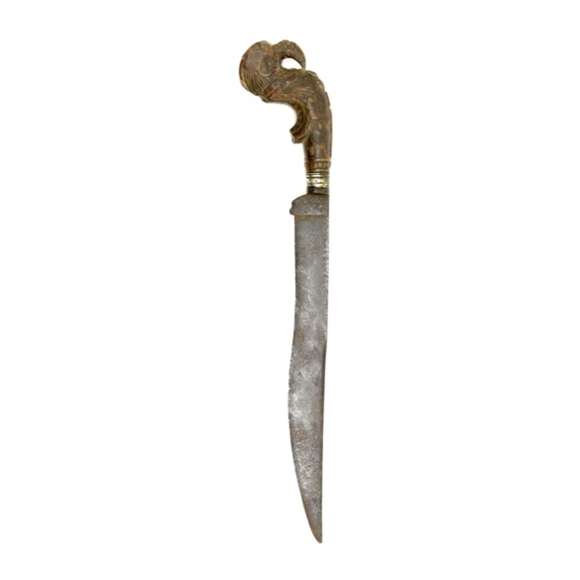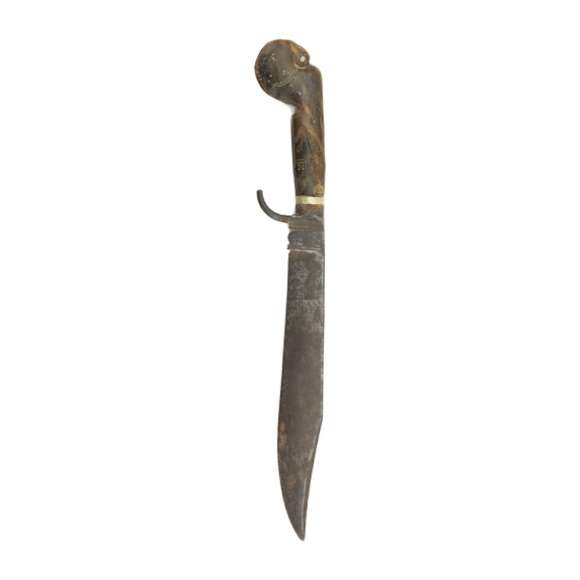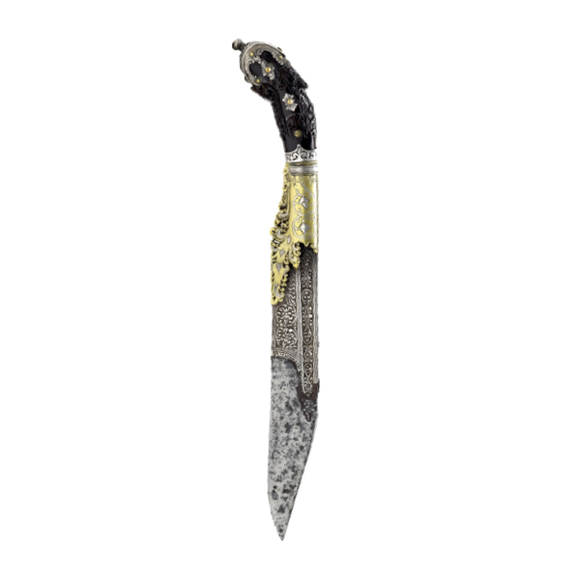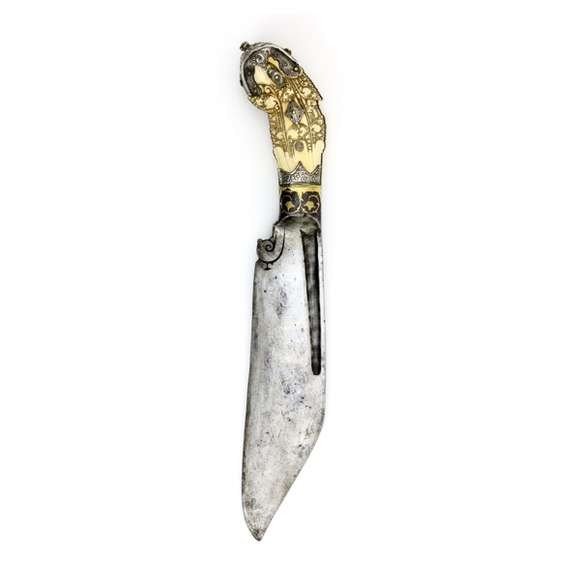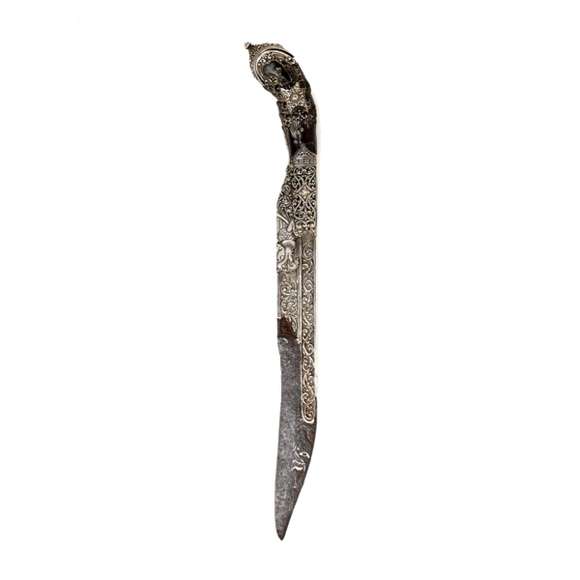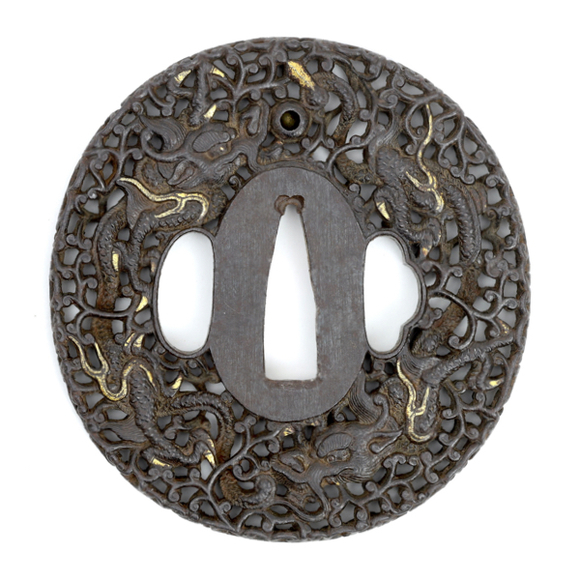A rare type of Sinhalese dagger with stylized bird hilt and blade with backedge.
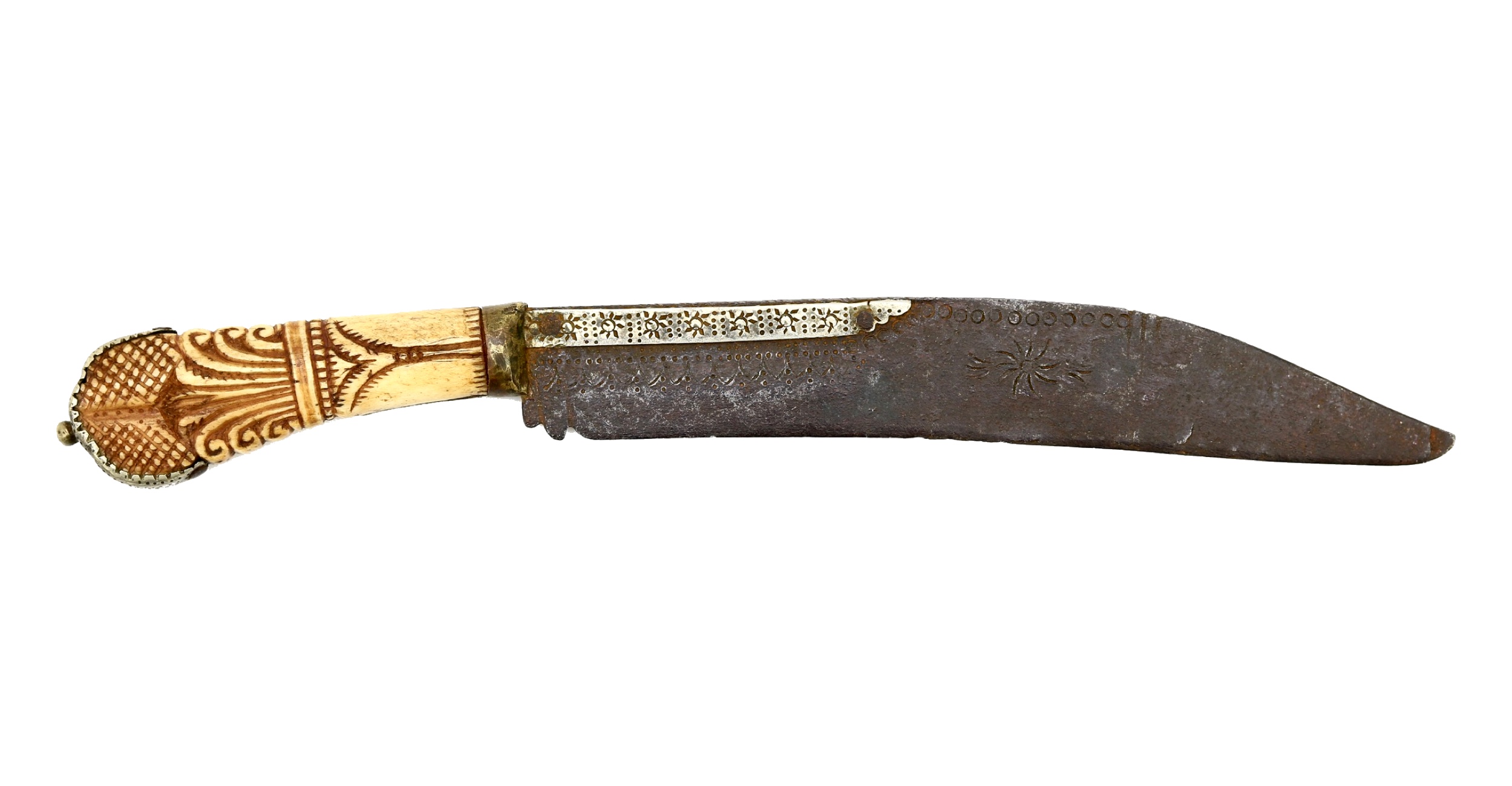
23.4 cm
15.5 cm
Base 2 mm
Widest 24.5 mm
78 grams
Sri Lanka (Ceylon)
Iron, white metal, brass, bone
19th century
Introduction
Among Sinhalese knives, the very ornate pihiya (knives) and pihiya kättha (billhook knives) made in the King's "Four Workshops" are somewhat overrepresented in collections in the western world. One can easily see why: they represent some of the finest craftsmanship done in Asia.
Perhaps because this culture produced such fantastic artwork, the mundane is often overlooked. As collectors past and present in many cases forgot to preserve the common people's knives, few survive today.
While not of superb craftsmanship, even the simple Sinhalese knives have very attractive qualities to them that show that love for pleasant forms was present in all layers of traditional Sinhalese society.
This example
A charming little Sinhalese knife. The overall design closely follows the form of the better-known pihiya kättha. It has an iron blade with a gentle recurve in the edge. The blade is decorated on both sides with chiseled geometric ornamentation and what seems to be a blazing sun on either side. The spine of the blade is reinforced with pierced, white metal plates, with a series of blazing stars.
The handle is carved from a single piece of bone, with traditional Sinhalese design elements such as the curly liya-pata that are the stylized remnant of what once was a bird's tail on earlier pieces.
The hilt further has a semi-circular pommel plate with a small finial.
Conclusion
A charming little Sinhalese knife, or pihiya. A rare, simpler type that would have been used by the common man.

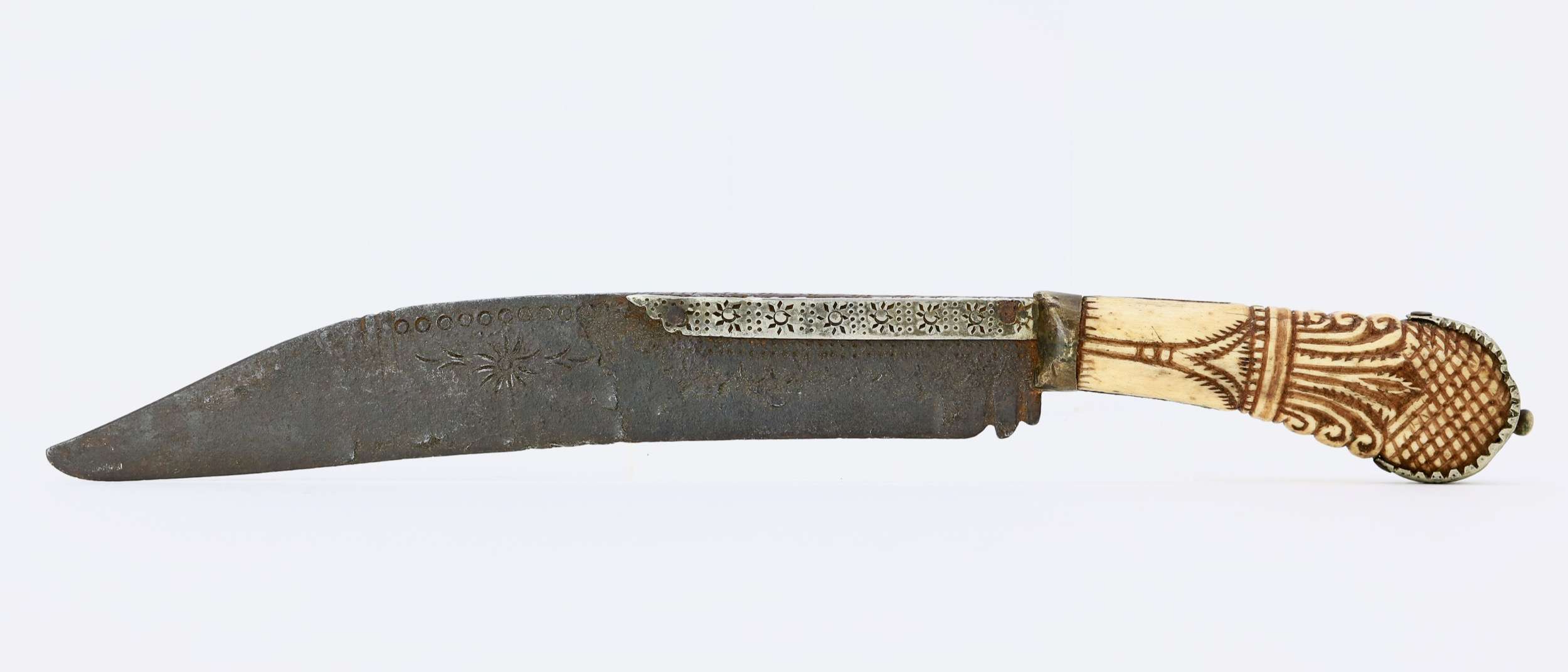
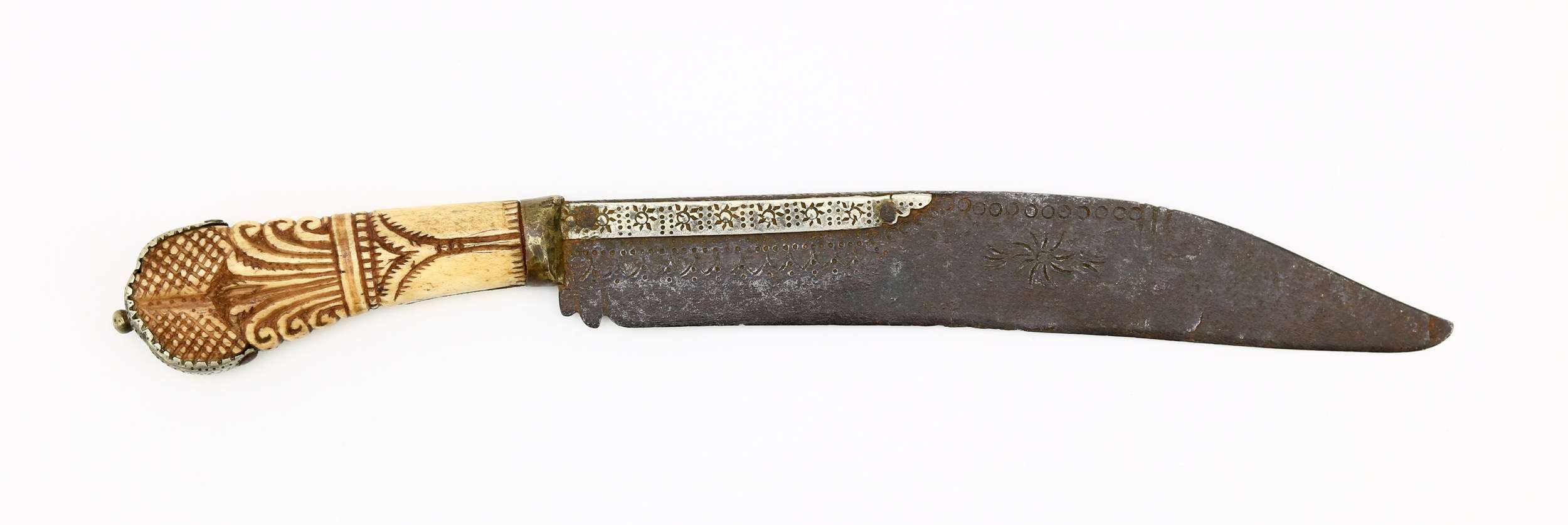

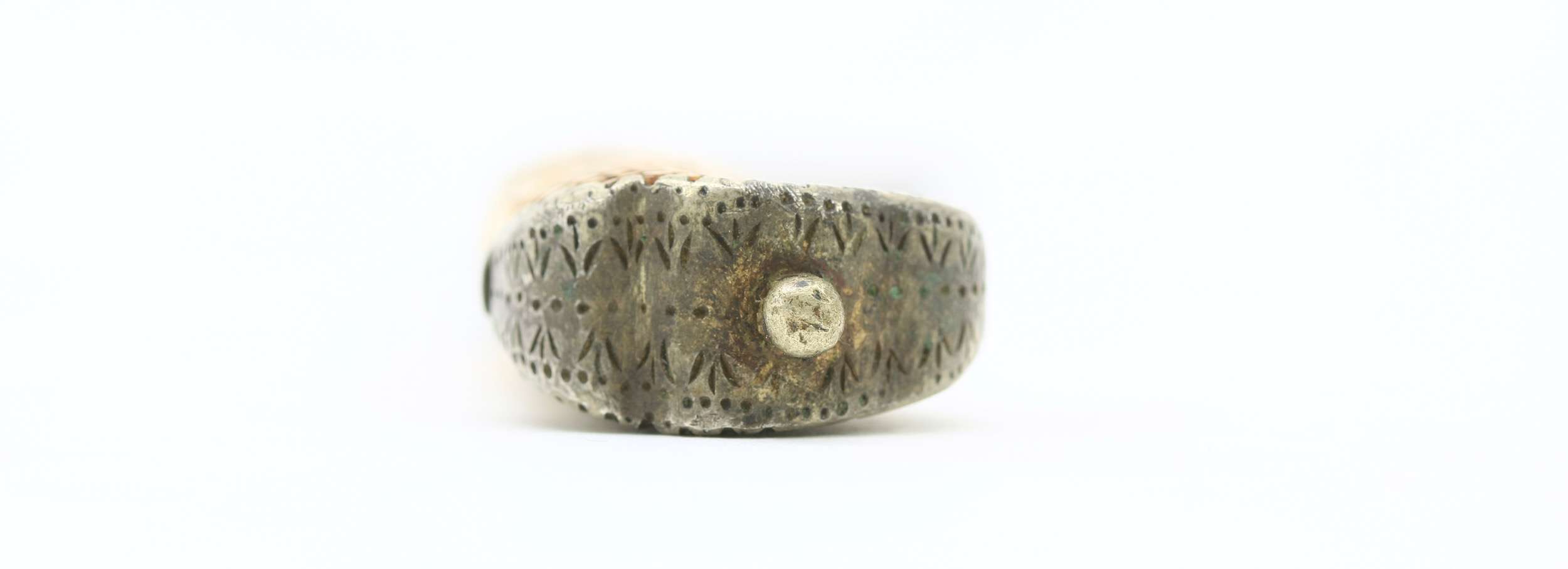

Of nice quality, with unusual openwork silver bolster with serapendiya.
The Yagami school were excellent carvers of iron, known for their 1000 monkey designs.

